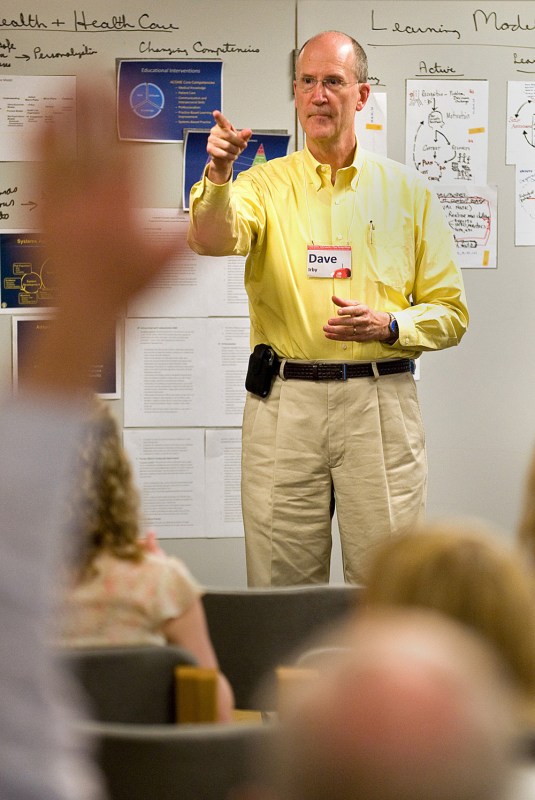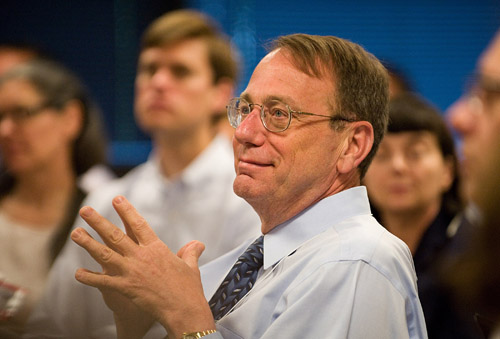
David Irby, Ph.D., of the University of California, San Francisco School of Medicine, speaks at a recent Vanderbilt workshop on health care education. (photo by Joe Howell)
VUSM workshop maps health care education's future
Major shifts in the health care system must be coupled with new systems of learning for health care professionals.
That statement rallied more than 50 leaders and professionals from Vanderbilt’s School of Medicine, School of Nursing and Informatics Center at a recent workshop charged with mapping the informatics and IT infrastructure to support future health care education.
The workshop arose from more than a year of assessment of VUSM’s educational enterprise spearheaded by Bonnie Miller, M.D., senior associate dean for Health Sciences Education, and Bill Stead, M.D., associate vice chancellor for Strategy and Transformation and Chief Information Officer. Miller and Stead co-sponsored the event at the Center for Better Health.

Bill Stead, M.D., was among those who took part in the health education workshop. (photo by Joe Howell)
David Irby, Ph.D., vice dean for education at University of California, San Francisco School of Medicine, acquainted participants with a major shift in beliefs about how health care professionals should learn.
Irby co-authored a report commissioned by the Carnegie Foundation called “the second Flexner report.” It looks at the future of medical education 100 years after the ground-breaking assessment by Abraham Flexner, which established many aspects of the current medical education model.
“Our report challenges those assumptions,” said Irby.
He outlined a proposed revamping of medical education that would allow students to complete all educational requirements in three years. An extra year could be used for scholarship, gaining additional skills or beginning residency.
A goal of this method is to instill health care professionals with a lifelong desire to learn.
“You have to continuously work at something if you want to be an expert,” Irby declared. “That happens best in a learning environment.”
Miller and Stead intend to forge the gold standard for this environment at Vanderbilt.
“We are here to figure out what capacities we need now and in the coming years for our education enterprise to be successful in creating competent and compassionate professionals,” Miller told the group. “We need to rethink our roles. We must consider ourselves members of teams whose functions are determined by what our patients need us to do. What do we need right now to move to that future?”
Participants assessed existing information technology and informatics, then designed initiatives that will move Vanderbilt to the forefront of support for health care education.
“All of you need to accomplish things with resources and manpower you don’t have,” Stead explained. “Look at how to tackle those problems, then put together a plan that’s not constrained by today’s resources. With a compelling plan, we can start finding resources”
Participants recommended a number of new and improved technologies. These included creation of an institution-wide Intranet with portals customized to the user; improved course and learning management systems; a library of evaluation instruments; and shared knowledge, information and content repositories.
“We’re on a trajectory of change in Vanderbilt’s history,” Stead recapped. “It’s a big reach, but we intend to move forward. Our end result is a roadmap of how we can do this over the next several years.”













